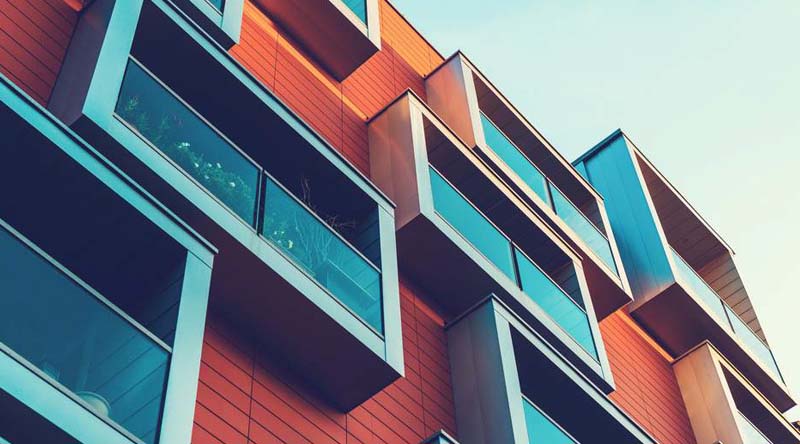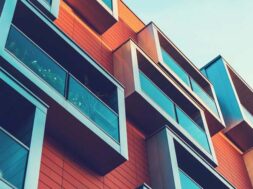
The leading experts across the building envelope solution providers have shared their expertise and the latest advancements, propelling energy efficiency and sustainability to the forefront of architectural design.
Building envelopes are of paramount importance in construction as they provide a protective shield, ensuring the separation of indoor and outdoor environments while safeguarding energy efficiency, structural integrity, and the overall comfort and well-being of occupants. These structures play a pivotal role in reducing energy consumption, controlling temperature and humidity, and shielding against environmental elements, thus enhancing sustainability and longevity while contributing to the visual aesthetics of buildings.
Ar. Akanksha Gupta, Partner at Vijay Gupta Architects, acknowledges the contemporary construction industry’s pressing challenges that call for innovative solutions in building envelopes and fenestration. To adapt, they prioritise materials and methods that streamline construction while addressing challenges like wind exposure and efficient maintenance. Innovations such as self-cleaning materials are on their radar to resolve maintenance issues associated with high-rise structures.
Furthermore Ar. Chanchal Poddar, Head of Design Studio at Design Forum International, highlights the complexity of building envelopes, emphasising performance efficiency, indoor comfort, aesthetics, and material durability. Their approach begins with innovative high-performance building envelope design using advanced insulation materials. Quality control through site mock-ups, rigorous material testing, and cost-benefit analyses ensures long-term operational savings.
Additionally Ar. Naveen G.J, Founder of De Square Architects, draws attention to their recent project, Abhilash Home, a unique 1200sqft residence in Bangalore, India. The innovative design segregates the building into levels, creating a sense of volume and visual intrigue with stacked boxes.
Ar. Mueen Haris, Founder of Ds2 Architecture, underlines the critical role of building envelope performance in energy conservation. Properly designed and constructed building envelopes reduce energy loss and enhance efficiency. They use insulation materials to minimise heat transfer and maintain stable indoor temperatures. Addressing air leakage through sealing gaps and cracks is crucial for preventing energy loss and ensuring indoor air quality.
Ar. Aishwarya R from Amit Khanna Design Associates (AKDA), shares that sustainability is at the core of their building envelope solutions. They focus on leveraging natural resources efficiently, prioritising natural light utilisation, sun-shading solutions, and suitable materials to enhance indoor comfort and energy conservation. The extensive use of local stones aligns with their sustainability goals.
Akanksha reveals their work’s core ethos: “At VGA, sustainability is seamlessly integrated into our building envelope solutions.” They prioritise eco-friendly materials and a holistic design approach, where the building’s surroundings, sun orientation, and shading are paramount considerations. “Sustainability isn’t an add-on; it’s intrinsic to our design process, harmonising functionality, aesthetics, and environmental responsibility,” she asserts.
Chanchal stresses their people-first principle. “Sustainable construction today is the backbone of all major activities,” he emphasises. Their approach involves a deep understanding of the site, its context, and the materials within the building envelope. He adds, “We prioritise sustainability and energy efficiency in construction, beginning with innovative high-performance building envelope design that uses advanced insulation materials.”
Ar. Mueen shares his expertise in addressing key challenges in the construction industry: “Building envelope solutions in the construction industry address challenges like enhancing energy efficiency by minimising heat transfer and air leakage.” His company focuses on creating comfortable indoor environments year-round and optimising insulation. “These solutions contribute to eco-friendliness by reducing resource consumption and waste generation,” he emphasises, “all while emphasising sustainability and energy performance.”
Ar. Naveen, believes building envelopes and sustainability go hand in hand. “By designing and constructing a sustainable envelope,” he elucidates, “we minimise the environmental impact of buildings, reduce energy consumption, and create healthier and more comfortable indoor environments.” Their approach considers the local climate, optimising orientation, shading, and ventilation to minimise the reliance on mechanical systems for heating and cooling.
Ar. Aishwarya, underscores their focus on sustainability. “At AKDA, sustainability is integral to our building envelope solutions,” she emphasises. They prioritise natural light, heat management, and passive design strategies for energy efficiency. “We incorporate high-performance components like double-glazed windows, insulation, solar panels, and efficient HVAC systems,” she reveals. Their work aligns with environmentally conscious, energy-efficient building solutions.
In an era defined by climate change awareness and eco-conscious construction, architects and their firms are on the frontlines of innovation, pushing the boundaries of building envelope solutions. Ar. Akanksha, leads the charge with innovative strategies for enhanced energy efficiency and sustainability. “At VGA, our building envelope solutions continually integrate innovation,” Ar. Akanksha asserts. They employ E-glass to mitigate heat loads and use recycled materials like wood chip compressed boards and HPL panels. She further highlights the vital role of efficient energy collection through strategically placed solar voltaic cells, reducing operating costs and emphasising a commitment to eco-friendly materials.
Ar. Chanchal, showcases their embrace of cutting-edge technologies. “In recent projects, we’ve embraced high-performance insulation materials, smart windows, kinetic facades, and photovoltaic solutions,” he reveals. Advanced BIM technology enhances design, construction, and operations. They explore modular and prefabricated building envelope elements for faster construction, improved precision, and reduced work. Nanotech coatings and surface treatments enhance durability and weather resistance. Integrated IoT sensors and building automation systems optimise energy usage and respond to changing environmental conditions.
Moreover Ar. Naveen, underlines the crucial role of building envelope performance in energy conservation. “The building envelope is the physical barrier between the conditioned and outdoor environments,” he explains. They utilise insulation materials like fibreglass, cellulose, or foam to improve thermal resistance. Energy-efficient windows and doors minimise heat transfer through low-emissivity coatings, multiple glazing layers, and insulated frames.
Whereas Ar. Mueen shares their innovative strategies, as seen in projects like Shareef House, stating that their design focuses on maximising natural ventilation and daylight usage, reducing reliance on artificial lighting and HVAC systems for improved energy efficiency. Using sustainable materials and construction practices minimises environmental impact, culminating in a building that blends aesthetics with sustainability.
Ar. Aishwarya underscores their holistic approach to sustainability. They prioritise energy efficiency through passive design strategies, leveraging solar orientation, window placement, and shading to minimise reliance on active heating and cooling systems. Collaborations with consultants facilitate the integration of high-efficiency HVAC systems, natural ventilation, and renewable energy sources like solar panels. Green terraces, roofs, and walls bolster insulation and manage stormwater, further contributing to their commitment to a sustainable future.
Cookie Consent
We use cookies to personalize your experience. By continuing to visit this website you agree to our Terms & Conditions, Privacy Policy and Cookie Policy.










